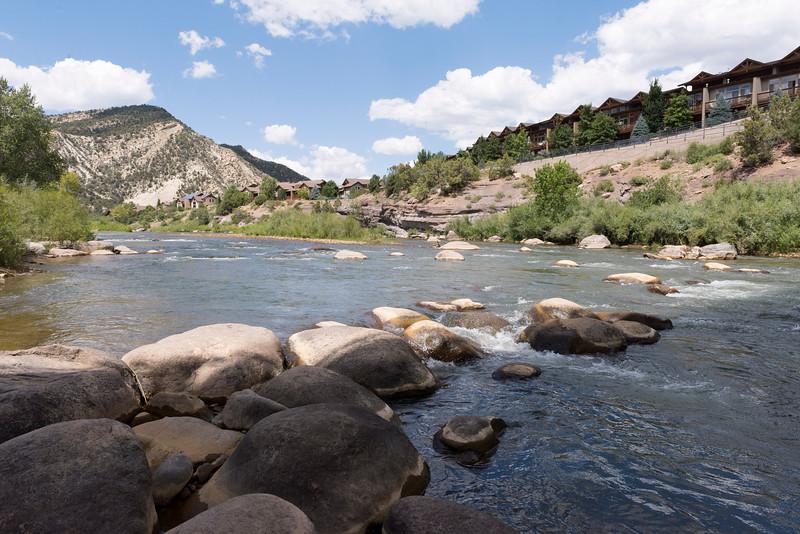On August 5, 2015, a mine spill was discovered in the Animas River in Colorado. According to news reports, the spill was triggered by a release of mine waste water which dumped about three million gallons of waste into the river. An Environmental Protection Agency team caused the release while investigating contamination at the Gold King Mine in San Juan County.
Initial estimates suggest it will cost anywhere from $20 to $54 billion to clean up and will take several years.
“The impacts from acid mine drainage affect the aquatic ecosystem mainly due to very low pH and high levels of bioavailable heavy metals,” said Rupali Datta, an associate professor of biology at Michigan Tech “Which can severely affect the biological community structure.”
Her research focuses on biochemistry and genetics to determine how metals are absorbed by plants and animals, as well as how the metals are best detoxed.
Dibs Sarkar, a professor of environmental geochemistry at Montclair State University, N.J., and an adjunct professor at Michigan Tech, said the spill is not a unique situation and could have been prevented.
“This was a totally avoidable situation,” said Sarkar. “It shouldn’t have happened with proper oversight, which unfortunately, is the case with many mine sites that produce acid mine drainage.”

According to the researcher, acid mine drainage is a routine problem in surface coal mines and metal mines, mostly due to improperly managed mines and abandoned sites.
While it’s too early to know what the long term impact from the spill on the Animus River basin will be, Datta and Sarkar said the EPA took quick action to tackle the situation.
The EPA has indicated they have deployed teams to conduct water monitoring, sampling, data collection as well as treatment.
“However, their treatment process is generating a huge amount of solid waste in the form of contaminated sediments that they have to deal with down the road, and I hope, they will look for “green” methods instead of just dumping them in landfills,” Sarkar said.
Rod Taylor, environmental risk and insurance expert and managing director at Aon Risk Solutions, said that it is unlikely there will be any insurance coverage from the mine owners or the EPA. Rather, there may be coverage from businesses along the river. For example, marina owners may have pollution coverage for claims filed against them. In addition, there may be other types of insurance coverage without pollution exclusions attached to them, like crop insurance, animal mortality insurance and business interruption coverage which may apply to tourism and manufacturers located along the river.
According to Taylor, acid mine drainage would likely change the pH level in the water which could affect the aquatic life and the water’s usefulness. Mine releases have occurred in the past. This one was particularly disturbing because of its mustard color, likely the result of dissolved iron, said Taylor. According to the EPA, though the contaminant plume deposited sediments, recent water samples detected reduced metal contamination. The agency has constructed settling ponds to treat the mine water.
Taylor said he couldn’t recall the EPA being involved in a mine release as serious as this one though other agencies have dealt with releases before. After Hurricane Katrina, the Army Corps of Engineers was sued as a result of the levees failing in New Orleans which caused severe flooding throughout the city. A federal judge found that the Flood Control Act of 1928 provided immunity to the Corps.
The EPA has begun accepting claims under the Federal Tort Claims Act. Claims must be submitted within two years after the claim begins to accrue. According to the website, “To be clear – EPA is not offering immediate reimbursements for damages from the Gold King Mine water and it is not true that if someone submits a claim that by doing so they limit or waive future rights.”
Was this article valuable?
Here are more articles you may enjoy.


 La Niña’s End Threatens to Unleash an Active Atlantic Hurricane Season
La Niña’s End Threatens to Unleash an Active Atlantic Hurricane Season  FBI Says Cybercrime Costs Rose to at Least $16 Billion in 2024
FBI Says Cybercrime Costs Rose to at Least $16 Billion in 2024  GSK Zantac Appeal Gets Tough Questions From Some US Judges
GSK Zantac Appeal Gets Tough Questions From Some US Judges  Auto Lobbying Groups Unite to Pressure Trump for Tariff Relief
Auto Lobbying Groups Unite to Pressure Trump for Tariff Relief 